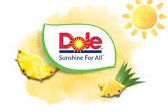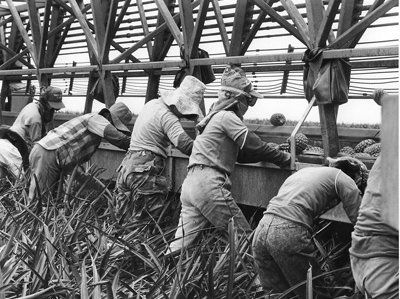Ka Mokupuni o Lānaʻi
- useduforce

- Mar 22, 2022
- 4 min read
Updated: Mar 29, 2022
Aloha hou kākou! Eia ka manaʻo o ka mokupuni ʻē aʻe, ʻo Lānaʻi! Ua ʻōlelo aku au i nā mokupuni ʻo Hawaiʻi a me Kahoʻolawe. E heluhelu ʻoukou, a e nanea i kēia :)
[Hello again everyone! Here is information of another island, Lānaʻi! I've talked about the islands Hawaiʻi and Kahoʻolawe. You should read them, and enjoy this :)]
Here, again, is the list of the ʻewalu mokupuni o Hawaiʻi. Here, I’ll be focusing on Lānaʻi, the “Pineapple Isle,” today. Note the kahakō (macron) and the ʻokina (apostrophe) in its name. On maps, it’s often incorrectly omitted!
Maui; inoa: The Valley Isle
Lānaʻi; inoa: The Pineapple Isle
Molokaʻi; inoa: The Friendly Isle
Oʻahu; inoa: The Gathering Place [state capital: Honolulu]
Kauaʻi; inoa: The Garden Isle
Niʻihau; inoa: The Forbidden Isle

Ka mokupuni o Lānaʻi
Lānaʻi has a history of having a low population. As captured by the myth of Kaululāʻau [coming soon], it was thought that man-eating akua and lapu dominated the island. After our mischievous boy conquered and rid of these spirits, humans finally began to inhabit Lānaʻi. However, after several hundred years of residence, the chief of the Island of Hawaiʻi named Kalaniʻōpuʻu slaughtered the Lānaʻi citizens in a war against Kamehameha I. Due to this detrimenal incident, British Captain George Vancouver in 1793 later remarks the "dreary and desolate appearance of their island...to be very thinly inhabited."
Today, the population is at 3,170.
Lānaʻi remarkably has no traffic lights, no public transportation, and only one gas station! This short, unedited video provides a nice tour of the one-horse town that is Lānaʻi City!

Lānaʻi's historically small populace (1924)
This next part might seem a little convoluted, but
it's important to the current events of Hawaiʻi!
In 1922, Dole Food Company (you might recognize that name and logo below!) bought the island and started the world's largest hala kahiki (pineapple) plantation, earning Lānaʻi nickname "the Pineapple Island." Residents, largely of Japanese nationality, worked these fields.

David Murdock eventually became the owner of Dole and, therefore, 98% of the island of Lānaʻi. With a decline in the company, however, pineapple harvests ceased in 1992 - 70 years after it officially started. With the impending chance of bankruptcy at hand, Murdock focused the island's economy on tourism and consequently constructed four high-end hotels, two of which are run by Four Seasons.

Pineapple plantation workers on Lānaʻi
When that still didn't help the economy, in 2012 Murdock finally sold the 98% of Lānaʻi to the new and current owner Larry Ellison - co-founder of the famous Oracle software company. Lānaʻi citizens are overjoyed with this change in management, especially with Ellison's intent to double the island's population, work to make it completely self-sufficient, and to have Lānaʻi be the "first economically viable, 100 percent green community."
With the sell, Murdock was allowed to use a quarter of Lānaʻi to build wind turbines, selling this energy to neighboring Oʻahu. This declaration created a major controversy among local residents, dividing the community into two polarizing positions: those in favor of the renewable energy and creating jobs for the already sluggish economy, and those opposed to the construction disrupting the nature and beauty of Hawaiʻi.

Pro- makani (wind) turbines

Against makani (wind) turbines
Kaiolohia Beach, more often referred to has Shipwreck Beach, features the World War II Liberty Ship (its proper, designated named being YOGN 42) that landed there in 1943. Ironically, this particular Navy ship was purposefully docked and abandoned here as the best way to dispose of it. (Perhaps this ship is the origin of Sims 2's vacation plot "South End Beach"? haha) At least two other ships were actually "wrecked" here, the earliest crash being in 1824.
Watch this short video of a drone buzzing around the mysterious, deserted vessel!
The ocean at this part of the island is unsafe to swim in, due to the strong currents and rocky floor, but the view (of the ship and the beauty of the beach) is amazing!

Close proximity of abandoned ship to Lānaʻi's shore
Lastly, the Garden of the Gods, or alternatively Keahiakawelo, is a desert-like area that is void of vegetation, but a place of two famous Hawaiian myths. The first is the reason for this area's Hawaiian name, the myth of Kawelo - if you break down and translate the name, you get "Ke ahi a Kawelo" or "The fire of Kawelo." The second myth tells of the romantic tragedy of a woman named Puʻupehe [coming soon]. Her husband buried her at the top of a cliff, now named after her.
Because of the rocky terrain and absence of roads, the only way to travel through and visit this place is through vehicles equipped with four-wheel drive!

Garden of Gods accessible only with four-wheel drive vehicles
Hua ʻōlelo:
- Hala kahiki = pineapple, "foreign hala fruit"
- Makani = wind
- Ahi = fire
SOURCES:
- [1793] [p. 159, PDF p. 9] Captain Vancouver's comments: https://play.google.com/books/reader?id=45tHyQzPu8cC&hl=en&pg=GBS.PA159
- [1961, though summarizes subsequent link from 1866] [p. 90-91, PDF p. 13-14] http://www.ulukau.org/elib/collect/chiefs/index/assoc/D0.dir/doc101.pdf
~~~



Comments